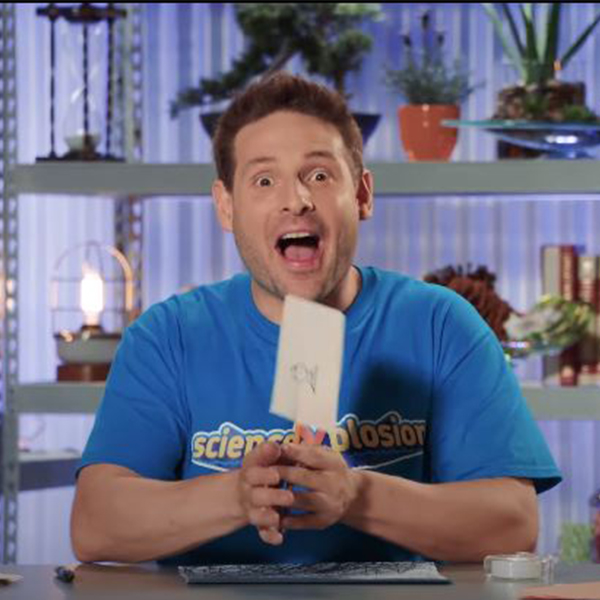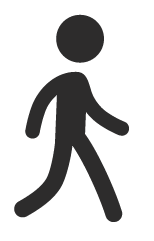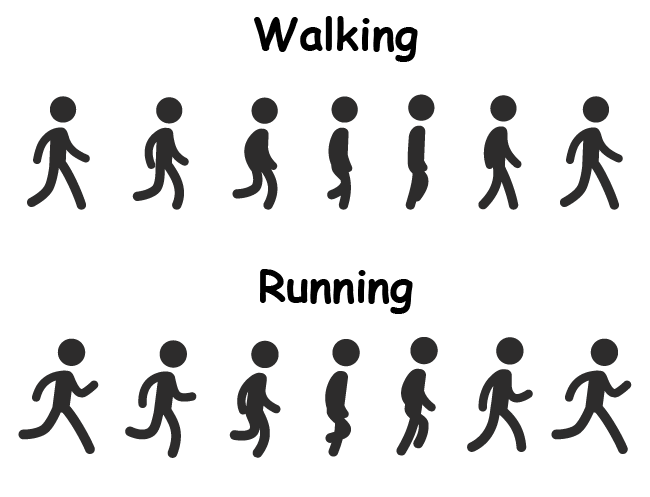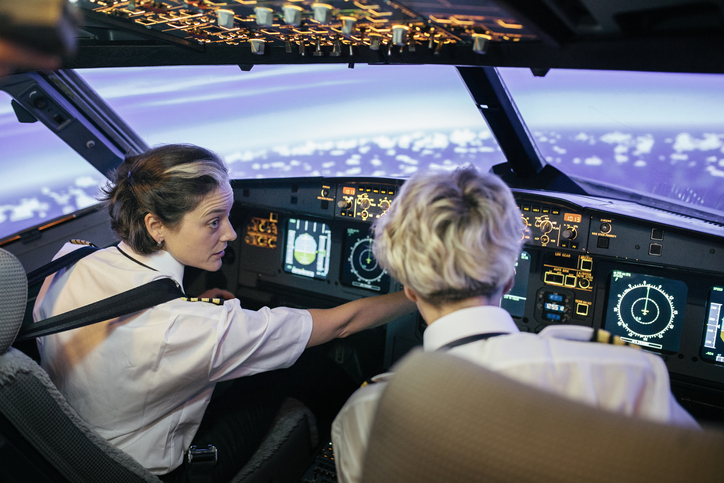ScienceXplosion - Optical Illusion, My Eye

Eric testing an optical illusion
On this episode of ScienceXplosion, Eric learns how our brain connects separate images together to create the illusion of movement. It's not magic, it's science!
BACK TO THE SCIENCEXPLOSION HOME PAGE
Now it's your turn! Flip-animate!
After you have tried Eric’s experiment, try creating a longer animation! What will you put on your pages?

Did you know?
The number of images per second a screen can display is represented in fps which stands for frames-per-second.
WHAT DO YOU NEED?
- Used or new notebook or journal
- Pencil
WHAT DO YOU DO?
- Start by thinking of a drawing you want to animate. Keep it simple. For your first flipbook, you will not want to have too many moving objects. And don’t worry about how well you can draw - even stick figures can make pretty cool animations!
- Think about the different parts of your animation. For example, if you want to create a stick figure throwing a basketball through a hoop, you need a stick figure, a ball and a hoop.

- Plan how you will animate your drawing by thinking of the sequence of images you need. You can quickly sketch or write the steps needed for your animation. For the basketball example, you may want to start with a figure with the ball in its hands. Then you might have the figure straighten its arms. After that the ball could move farther and farther from the figure until it reaches the hoop.
Hint: The sequence of body movements will be easier to draw if you watch a video of a real person doing the action.

- When your plan is done, start by drawing your first image on the last page of your book.
- Draw your next image on the second to last page. It should be a little bit different than the previous image. If you want the images to move smoothly, you will need to draw many images and make small changes each time.
- Continue your drawings until you get to the end of your animation.
- Animate your drawing by grabbing all the pages and flipping through them!
WHAT'S NEXT?
- Try to make even more complex animations by adding more elements or colour.
- If you really like making flip books and want to save time, you can use a lighted background to replicate your drawings, such as seen in this video. Just make sure to use something you can’t damage by accidentally writing on it.
- Why not create your next greeting card (for a birthday, Christmas, Father or Mother’s day) as a flip book!
WHAT’S THE POINT?
In the case of flip books, movies and TV, tricking the brain is fun. But in some cases, our brain can play tricks on us that can be dangerous. Sometimes the brains of pilots are tricked when what they see on their dials does not match what they see out the window.

WHAT ELSE?
If you have access to a 3D printer, try to build your own zoetrope, which is a device that came before movies which uses the same optical illusion principle to make images “move”.
With over 20 years experience, GAPC Entertainment’s team creates stories with power, creativity and reach. GAPC Entertainment is a vibrant Canadian production company with a passion for creating quality programming for national and international audiences on all platforms.
GAPC Entertainment produces creative, diverse, and compelling content across most genres, including performing arts, biopics, science, history, drama, and award-winning children’s educational programs.
